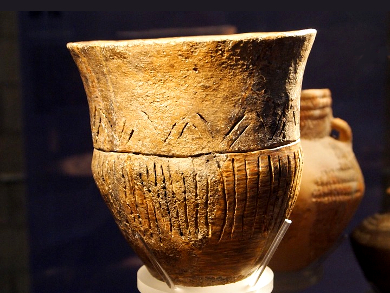Historical objects in museums and collections are, often over centuries, exposed to atmospheric moisture and atmospheric gases such as carbon dioxide and oxygen. In addition, wooden furniture – especially those made of oak – emit formic and acetic acid or their precursors, formaldehyde and acetaldehyde.On glasses, humid air often forms basic liquid films which contain dissolved alkali metals from the glass. These films corrode metals on metal glass contact surfaces. Lime-containing objects often react with acetic acid or acetaldehyde from wooden furniture. One consequence is a white, needle-shaped blossom, also known as Bynes’ disease.
Sebastian Bette, Robert E. Dinnebier, and Gerhard Eggert, Max Planck Institute for Solid State Research, Stuttgart, Germany, describe methods for detecting corrosion products to conserve collection items such as dishes, furniture, and pictures in museums and collections. In addition to information on the materials and the production of the objects, data on the nature and constitution of the corrosion products are necessary and a prerequisite for developing conservation strategies. In addition to the limited amount of sample, the finely crystalline character of the corrosion products and multiphase mixtures complicate the investigations.
With X-ray powder diffractometry (XRPD), known crystalline phases can be identified by database matching. Additionally, they can be quantified in mixtures. In addition, XRPD helps to determine the behavior of solids depending on time, temperature, and humidity. Crystal structures can also be elucidated ab initio, i.e., without prior knowledge, whereby the structural characterization of solid phases no longer necessarily requires single crystals. Thus, modern methods of X-ray powder diffractometry, combined with scanning electron microscopy (SEM) and energy dispersive X-ray spectroscopy (EDX), microfocusing vibration spectroscopy and model experiments without single crystals can provide reliable information. Producing phase-pure compounds and comparing them with uncharacterized corrosion products helps to not only track corrosion processes, but also to avoid them and to gently restore objects.
- Zersetzung bringt Neues: Korrosionsprodukte im Museum,
Sebastian Bette, Robert E. Dinnebier, Gerhard Eggert,
Nachr. Chem. 2017, 65, 1185–1189.
https://doi.org/10.1002/nadc.20174066405




